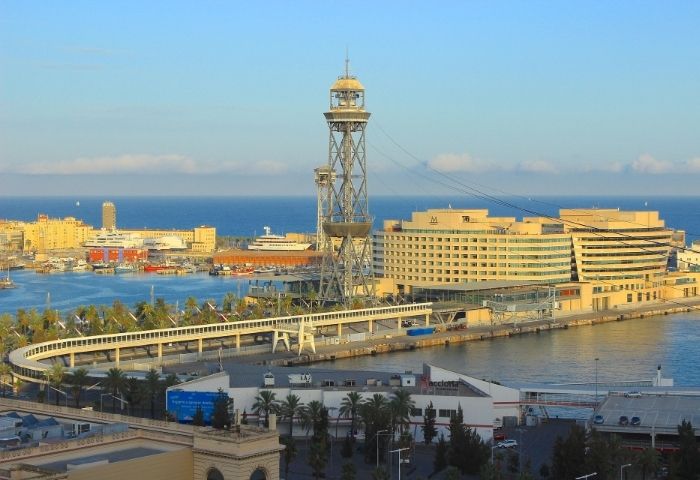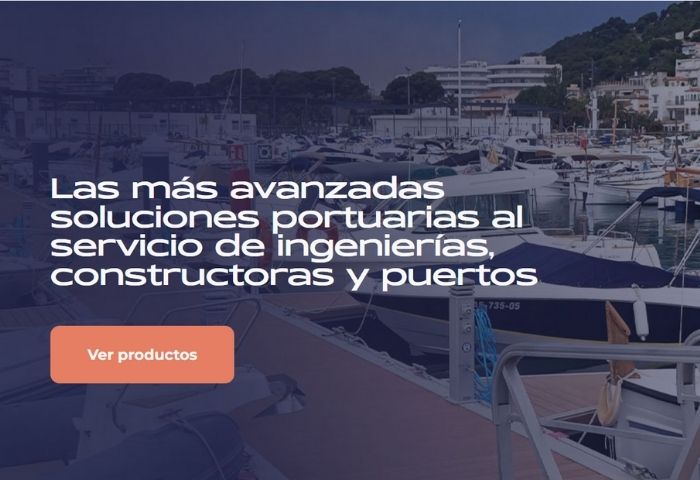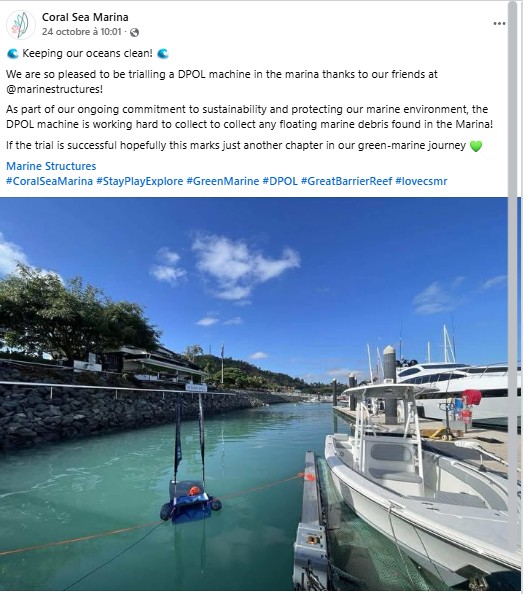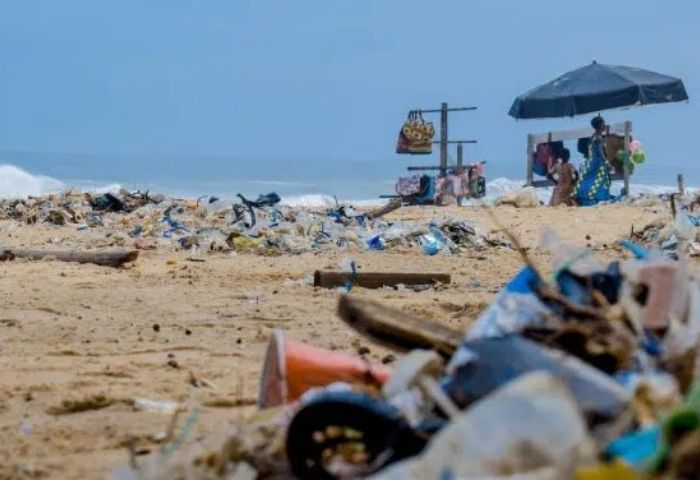When the wind howls over the mediterranean, ports become receptacles for everything the sea carries. That’s exactly what happened at the Port of Barcelona during a storm with southeast winds: a mass of floating debris and vegetation surged into the afloat technical zone of MB92 Barcelona, Europe’s leading superyacht refit yard.
🚧 A Zone Paralyzed by Waste
The debris accumulated between the docks and the yachts under renovation, forming a dense, inaccessible layer. The port’s service boats, too bulky or not maneuverable enough, couldn’t reach these narrow areas to carry out the cleanup. As a result, operations were halted, and MB92’s teams faced a pollution challenge that was difficult to contain.
🛠️ An Agile and Industrial Solution: The DPOL® MAX
This is where the DPOL® MAX came into play. Thanks to its compact design and ability to slip into hard-to-reach areas, it was deployed directly between the docks and the hulls. Once in the water, its three 400W pumps generated a surface current, drawing the debris into its collection net.
In just a few hours, the DPOL® MAX helped clear the zone, allowing the shipyard’s technical teams and clients aboard their yachts to return to normal operations.
🤝 An Exemplary Collaboration
This intervention perfectly illustrates the added value of the DPOL® MAX in industrial port environments. In collaboration with MB92 Barcelona, we demonstrated that pollution removal can be fast, targeted, and effective, even under extreme conditions.
Facing hard-to-reach floating pollution? Try the DPOL® MAX in your facilities: book a demo.








